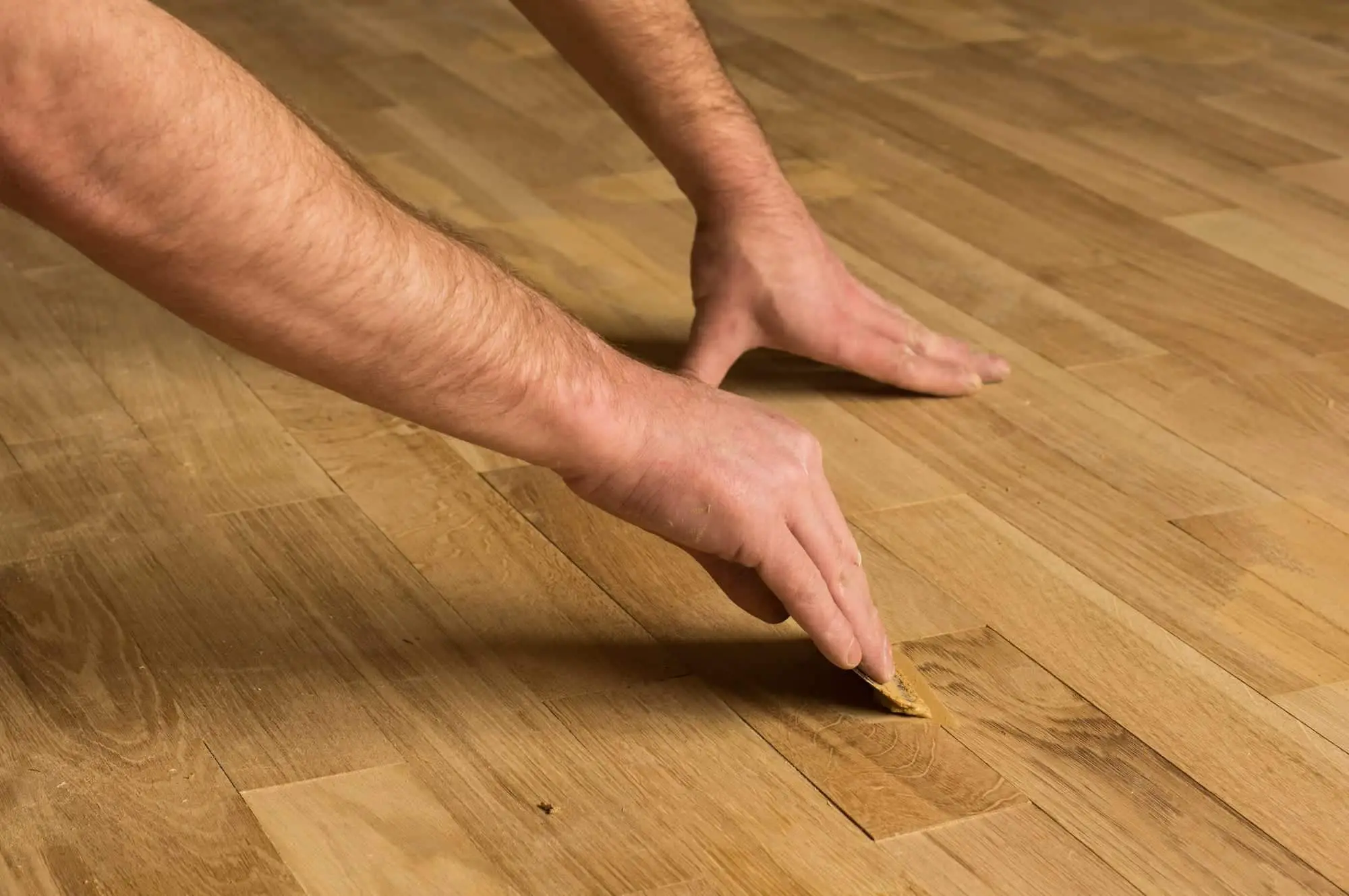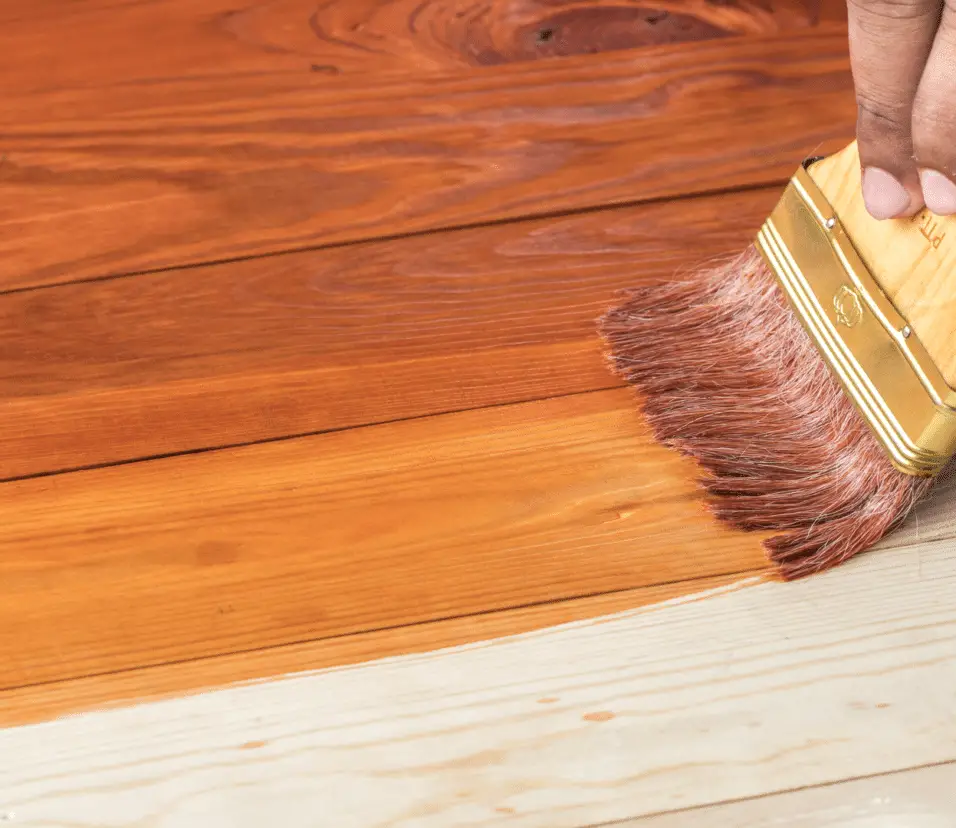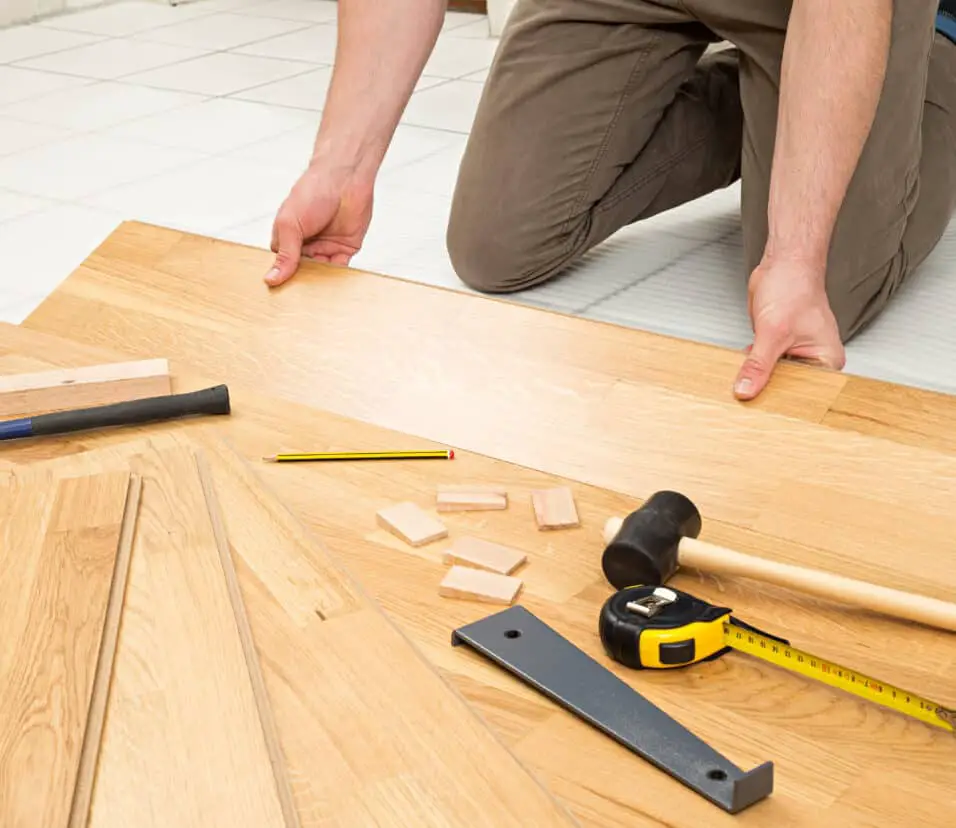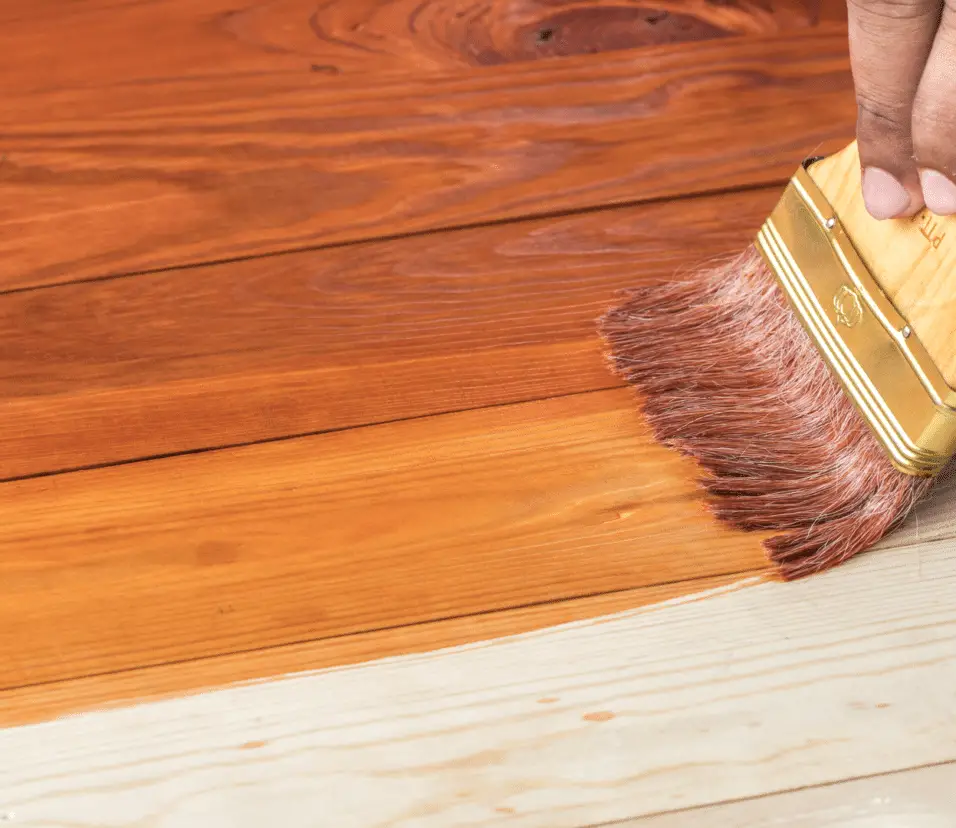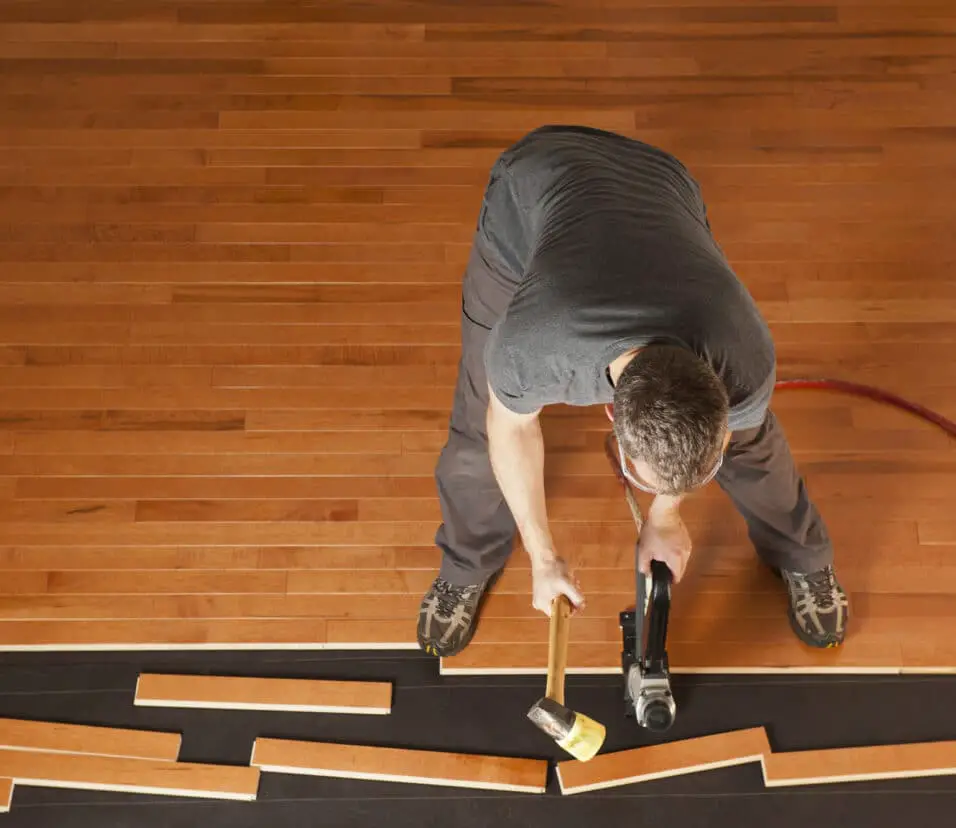How To Fill Cracks In Wood Floor
Introduction
How To Fill Cracks In Wood Floor: Wooden floors add warmth and elegance to any home, but over time, cracks may appear due to various factors such as changes in humidity, aging, or improper maintenance. These cracks not only detract from the visual appeal of the floor but can also pose a tripping hazard if left unaddressed. Fortunately, filling cracks in a wood floor is a manageable task that can be undertaken by homeowners.
Before delving into the process of filling cracks, it is essential to understand the wood floor causes behind their formation. Wood is a natural material that expands and contracts in response to changes in temperature and humidity. These fluctuations can lead to the development of small to large cracks over time. Additionally, improper installation techniques or lack of maintenance can contribute to the occurrence of cracks.
To begin filling cracks, the first step is to prepare the floor. Thoroughly clean the cracks and the surrounding area, removing any dirt, debris, or loose particles. A vacuum or broom can be used for this purpose. It is crucial to have a clean and dry surface to ensure proper adhesion of the filler.
Next, select the appropriate wood filler based on the size and depth of the cracks. For small cracks, ready-to-use wood fillers are commonly used, while larger or deeper cracks may require an epoxy resin filler for a stronger and more durable repair.
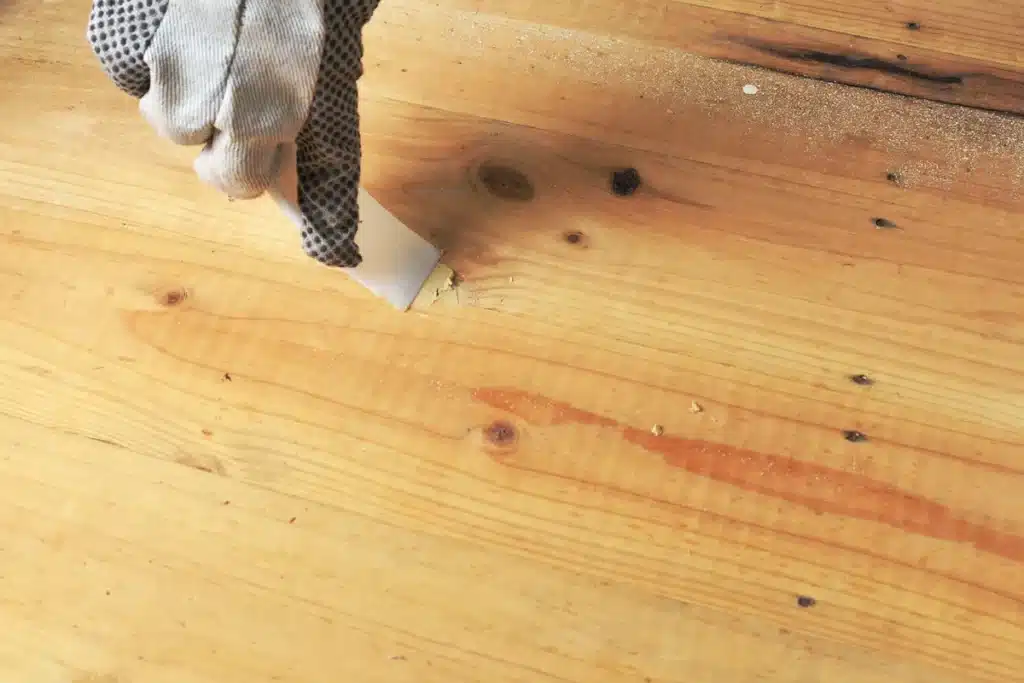
What do you use to fill cracks in wood floor?
You can fix minor splits and fractures with epoxy (wood glue) and filler. First, fill the crack with epoxy, then apply the filler to help conceal it. Allow both to dry and harden completely before sanding and finishing the area.
When it comes to filling cracks in a wood floor, there are several materials commonly used to achieve a smooth and durable repair. The choice of filler depends on the size and depth of the cracks, as well as the desired level of strength and longevity. Here are some of the materials that can be used:
Wood Filler
Filling tiny to medium cracks in a wood floor with wood filler is a common practise. It’s a putty-like material that comes in different shades to complement various types of wood. Wood filler normally consists of wood fibres bound together with an adhesive like epoxy or vinyl. It can be applied with a putty knife or scraper to the cracks with little effort. It can then be sanded and stained to match the rest of the floor once it has dried.
Epoxy Resin Filler
For larger or deeper cracks, epoxy resin fillers are often preferred due to their strength and durability. Epoxy is a two-part compound that consists of a resin and a hardener. When mixed together, it creates a strong adhesive that can bond well with wood surfaces. Epoxy resin fillers penetrate deep into the cracks, providing a robust and long-lasting repair. They can be applied using a putty knife or syringe and require sufficient curing time to harden properly.
Sawdust and Glue Mixture
Another DIY option for filling cracks is to create a mixture of sawdust and wood glue. Collect sawdust from the same type of wood as your flooring and mix it with wood glue to form a paste-like consistency. Apply the mixture to the cracks, ensuring it fills the gaps completely. After drying, sand the surface to achieve a smooth finish. This method is cost-effective and can produce satisfactory results for small cracks.
Latex Caulk
Latex caulk is a flexible sealant commonly used for filling gaps and cracks in various materials, including wood floors. It is available in different colors and can be applied using a caulk gun. Latex caulk is ideal for minor cracks and gaps that may occur due to seasonal changes or normal wood movement. It provides a flexible seal that allows for slight expansion and contraction of the wood.
Should you fill the cracks in hardwood floors?
In our professional opinion, if your old wood floor has gaps, just live with them. They will look worse if you fill them and the wood filler cracks. Try to bring up the humidity in your home or wait for summer to come around to see them close up a bit.
Filling cracks in hardwood floors is generally recommended, especially when the cracks are noticeable or pose a potential tripping hazard. Here are some reasons why filling cracks in hardwood floors is beneficial:
Aesthetics
Cracks in hardwood floors can be unsightly and detract from the overall appearance of a room. Filling the cracks helps to restore the smooth and seamless look of the floor, enhancing the visual appeal of the space.
Safety
Depending on the size and depth of the cracks, they can present a tripping hazard, especially for children, elderly individuals, or those with mobility issues. Filling the cracks ensures a level surface, minimizing the risk of accidents and injuries.
Prevention of further damage
Cracks in hardwood floors can worsen over time if left untreated. Moisture, dirt, and debris can accumulate in the cracks, leading to the expansion of the gaps or potential damage to the surrounding floorboards. Filling the cracks prevents further deterioration and helps maintain the structural integrity of the floor.
Improved durability
Filling cracks in hardwood floors can increase the floor’s overall durability. The filling material reinforces the affected areas, preventing the cracks from widening and reducing the likelihood of future damage. This is particularly important for high-traffic areas where the floor is subjected to constant stress.
Energy efficiency
Cracks in hardwood floors can contribute to drafts and energy loss. Filling the cracks helps to seal the gaps, reducing air infiltration and improving energy efficiency within the room.
Enhanced hygiene
Unfilled cracks can trap dirt, dust, and debris, making cleaning more challenging. Filling the cracks creates a smooth and even surface that is easier to clean and maintain, promoting better hygiene and indoor air quality.
While filling cracks in hardwood floors is generally recommended, it is important to consider the severity and extent of the cracks. For minor hairline cracks, filling may not be necessary, as they are often a result of natural wood movement and do not affect the floor’s integrity. However, for larger or deeper cracks, filling is advisable to prevent further damage and maintain the floor’s appearance and functionality.
Why is my wood floor cracking?
If you have cracks in your hardwood floor, the problem is likely to be low humidity and low moisture in the room, causing the wood to dry out. This could happen for a number of reasons, including: open fires, log burners, underfloor heating system running too hot, and also the frequent use of air conditioning units.
Wood floor cracking can occur due to various factors, and understanding the possible causes can help identify the appropriate solution and prevent future damage. Here are some common reasons why wood floors may develop cracks:
Natural Wood Movement
Wood is a natural material that expands and contracts in response to changes in humidity and temperature. Fluctuations in moisture levels can cause the wood to swell or shrink, leading to the development of cracks over time. This is particularly common in environments with significant humidity variations.
Insufficient Acclimation
Improper acclimation of wood flooring before installation can contribute to cracking. When wood is not given enough time to adjust to the moisture levels of its surroundings, it may expand or contract after installation, leading to cracks.
Poor Installation
Inadequate installation techniques can put stress on the wood floor, leading to cracks. This can include improper nailing, insufficient adhesive application, or failing to leave appropriate expansion gaps around the perimeter of the floor.
Moisture Imbalances
Excessive moisture or dryness can cause wood floors to crack. High humidity levels can lead to wood swelling, while low humidity levels can cause the wood to shrink. Poor moisture control within the home or exposure to water leaks can contribute to these imbalances.
Aging and Wear
Over time, wood floors naturally undergo wear and tear. As they age, they become more susceptible to developing cracks. This can be exacerbated by heavy foot traffic, furniture movement, or impacts.
Are cracks in floor normal?
It’s common for cracks to form in a home’s foundation after it’s built. Most times, the cracks are normal, non-structural settlement cracks. However, there are many reasons a foundation cracks, such as the home’s settling, concrete shrinkage and curing, stress, and poor construction.
Cracks in floors can be relatively common and are often a result of various factors. While some cracks may be considered normal and harmless, others may indicate underlying issues that require attention. Here’s a closer look at the different types of floor cracks and their normality:
Hairline Cracks
Hairline cracks are thin, shallow cracks that are often considered normal and not a cause for concern. These cracks are typically a result of natural wood or concrete movement due to changes in temperature and humidity. Hairline cracks are common in both wood and concrete floors and are generally cosmetic in nature. They do not usually affect the structural integrity or functionality of the floor.
Settlement Cracks
Settlement cracks occur in concrete floors and are a result of the settling or shifting of the building’s foundation. These cracks are more common in new constructions or in areas with unstable soil conditions. While settlement cracks can be concerning, especially if they are wide or jagged, small hairline settlement cracks are relatively normal and can be expected to some extent.
Structural Cracks
Structural cracks are larger, wider, or deeper cracks that can indicate significant underlying issues with the floor or building structure. These cracks may be a result of structural movement, foundation problems, or excessive loads on the floor. Structural cracks should be evaluated by a professional as they may require immediate attention and repairs to ensure the safety and stability of the structure.
Expansion and Contraction Cracks
Floors made of materials like concrete, tile, or vinyl can experience expansion and contraction due to temperature and humidity changes. These fluctuations can lead to small, temporary cracks. Expansion joints or proper installation techniques can help minimize the occurrence of these cracks.
Cracks in Wood Floors
Wood floors can develop cracks due to natural wood movement, aging, or insufficient installation and maintenance practices. Small cracks in wood floors are generally considered normal and can be addressed with regular maintenance, such as filling and refinishing. However, larger or recurrent cracks may indicate deeper issues and should be assessed by a professional.
What Is The Best Product To Fill In Wood Cracks?
Best Wood Filler for Outdoor Use—Minwax Wood Filler
The Minwax stainable wood filler is great for outdoor use as it is weather and water-resistant, as well as rot-resistant. This two-part wood filler can be used to repair cracks and holes in wood and also to repair rotten wood.
When it comes to filling wood cracks, several products are commonly used, each with its own benefits and suitability for different types of cracks. The best product to fill wood cracks depends on factors such as the size and depth of the cracks, the desired durability, and the specific requirements of the project. Here are some popular options:
Wood Filler
Wood filler is a versatile and commonly used product for filling small to medium-sized cracks in wood. It comes in different formulations, including water-based, solvent-based, or epoxy-based fillers. Wood fillers are available in various colors to match different wood tones, making them ideal for achieving a seamless blend with the surrounding wood. They are easy to apply, sand, and finish, providing a relatively quick and affordable solution.
Epoxy Resin
Epoxy resin is a durable and strong filler option, suitable for larger or deeper cracks. It consists of a two-part mixture, typically a resin and a hardener, that when combined creates a hard and adhesive substance. Epoxy resin fillers penetrate deep into the cracks, providing structural stability and resistance to further cracking. They are commonly used for high-traffic areas or for repairing damaged or rotten wood.
Sawdust and Wood Glue Mixture
For a more cost-effective DIY option, a mixture of sawdust and wood glue can be used to fill cracks in wood. The sawdust, obtained from the same type of wood as the flooring, is mixed with wood glue to create a paste-like consistency. This mixture is then applied to the cracks and allowed to dry. It can be sanded and stained to match the surrounding wood. This method is particularly useful for small cracks and can produce satisfactory results with minimal expense.
Wood Epoxy Putty
Wood epoxy putty combines the advantages of wood filler and epoxy resin. It is a pre-mixed product that contains wood fibers and epoxy resin, providing a strong and durable filler. Wood epoxy putty is easy to work with and can be shaped to fit the cracks precisely. It is available in different colors and can be stained or finished to match the wood floor.
Can I Fill Small Cracks In My Wood Floor Myself?
Yes, filling small cracks in your wood floor is a project that can often be done by yourself, especially if you have some basic DIY skills. Here are some points to consider when filling small cracks in your wood floor:
Assessment
Start by assessing the size and depth of the cracks. Small cracks, such as hairline cracks, are generally considered minor and can be effectively filled without professional assistance.
Cleaning
Thoroughly clean the cracks and the surrounding area of the floor. Remove any dirt, debris, or loose particles using a vacuum or broom. A clean surface ensures better adhesion of the filler.
Choose the right filler
Select a suitable filler for the cracks. Ready-to-use wood fillers are commonly available and work well for small cracks. Consider factors such as the color match with your wood floor and the specific properties of the filler.
Application
Using a putty knife or scraper, apply the filler into the cracks. Press it firmly into the crevices, ensuring the cracks are completely filled. Smooth out the surface of the filler, making it level with the surrounding floor.
Drying and Finishing
Follow the manufacturer’s instructions regarding the drying and curing time for the filler. Once it has dried, sand the filled areas lightly to smooth out any imperfections. You can then apply a wood stain or finish to match the color of the floor, if desired.
Regular Maintenance
Keep in mind that filling small cracks is a temporary solution. To maintain the overall condition of your wood floor, it’s important to follow a regular maintenance routine, such as keeping the floor clean, controlling humidity levels, and protecting it from excessive wear and tear.
However, it’s important to note that if the cracks are large, extensive, or recurring despite your efforts to fill them, it may be best to consult a professional. They can assess the condition of your wood floor and provide appropriate solutions to address the underlying causes of the cracks.
What Materials Do I Need To Fill Cracks In A Wood Floor?
To fill cracks in a wood floor, you will need several materials to ensure a successful repair. Here are the essential items you’ll need:
Wood Filler or Epoxy Resin: Depending on the size and depth of the cracks, you can choose between wood filler or epoxy resin. Wood filler is suitable for small to medium-sized cracks, while epoxy resin is better for larger or deeper cracks. Both options are readily available at hardware stores and come in different formulations and colors to match your wood floor.
Sandpaper: Sandpaper is necessary for preparing the surface and smoothing out the filled cracks. Choose sandpaper with different grits, such as medium and fine, to achieve the desired level of smoothness.
Putty Knife or Scraper: A putty knife or scraper is essential for applying the filler into the cracks. These tools help you press the filler into the crevices and ensure a smooth and even application.
Vacuum or Broom: Before filling the cracks, it’s important to clean the area thoroughly. Use a vacuum cleaner or broom to remove any dirt, debris, or loose particles from the cracks and the surrounding floor.
Clean Cloth or Sponge: Keep a clean cloth or sponge on hand for wiping away excess filler and ensuring a neat finish.
Safety Equipment: Depending on the filler you choose, you may need safety equipment such as gloves, safety glasses, or a respirator mask. Follow the manufacturer’s instructions and take the necessary precautions to protect yourself during the filling process.
What Should I Do If The Cracks Reappear After Filling Them?
If cracks reappear after filling them in your wood floor, it can be frustrating and indicate underlying issues that need to be addressed. Here are some steps you can take if the cracks reappear:
Assess the cause
Determine why the cracks are reappearing. It could be due to ongoing wood movement, structural issues, moisture problems, or inadequate initial repair. Understanding the cause is crucial to finding an appropriate solution.
Evaluate the severity
Determine the extent of the reappearing cracks. Are they minor hairline cracks or more significant gaps? This evaluation will help you determine the necessary course of action.
Consult a professional
If the cracks persist despite your attempts to fill them, it may be wise to consult a professional flooring contractor or wood specialist. They can conduct a thorough inspection to identify the underlying issue and provide expert guidance on how to address it effectively.
Address moisture imbalances
Excessive moisture or dryness can cause wood to expand or contract, leading to cracks. Ensure proper humidity control in your home, especially in areas with wood flooring. Use a humidifier or dehumidifier as needed to maintain consistent moisture levels.
Consider professional repair
Depending on the severity of the reappearing cracks, it may be necessary to engage a professional to repair or replace the affected floorboards. They can ensure proper installation, address any structural concerns, and provide a long-lasting solution.
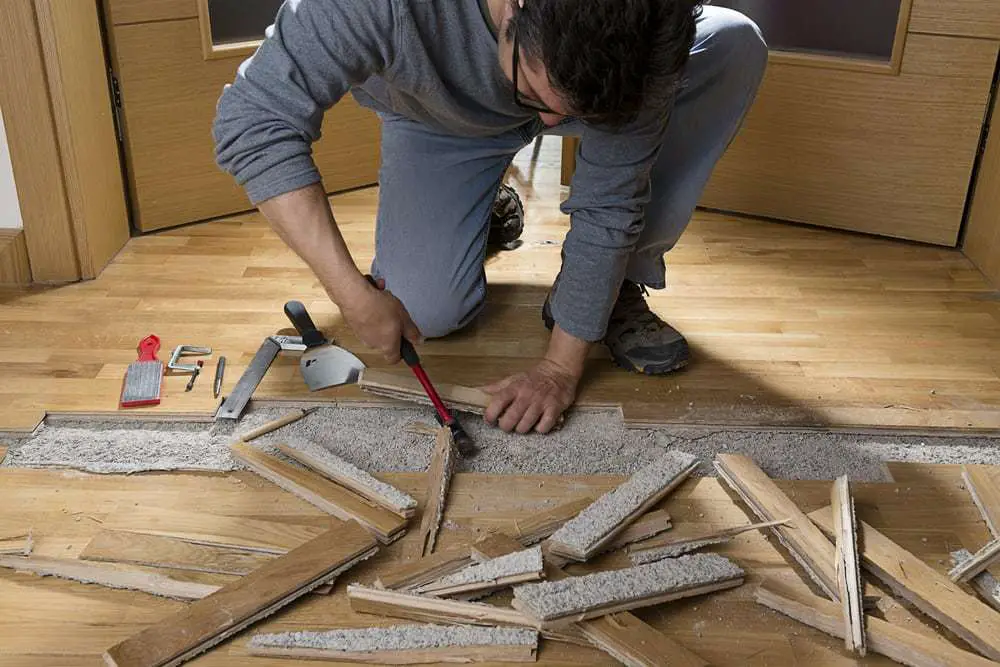
Conclusion
Filling cracks in a wood floor is a practical and achievable task that can be undertaken by homeowners. By following the appropriate steps and using the right materials, you can effectively repair and restore the integrity and appearance of your wood floor. Here are some key points to remember.
Firstly, assess the size and severity of the cracks. Small cracks, such as hairline repair cracks, are often considered normal and can be filled as a DIY project. However, larger or recurrent cracks may require professional assessment and intervention. Ensure proper preparation before filling the cracks. Clean the cracks and the surrounding area to remove any dirt or debris, providing a clean surface for the filler to adhere to.
Choose the appropriate filler based on the size and depth of the cracks. Wood filler is commonly used for small to medium-sized cracks, while epoxy resin is suitable for larger or deeper cracks. Consider the color match with your wood floor and follow the manufacturer’s instructions for application and drying times.



